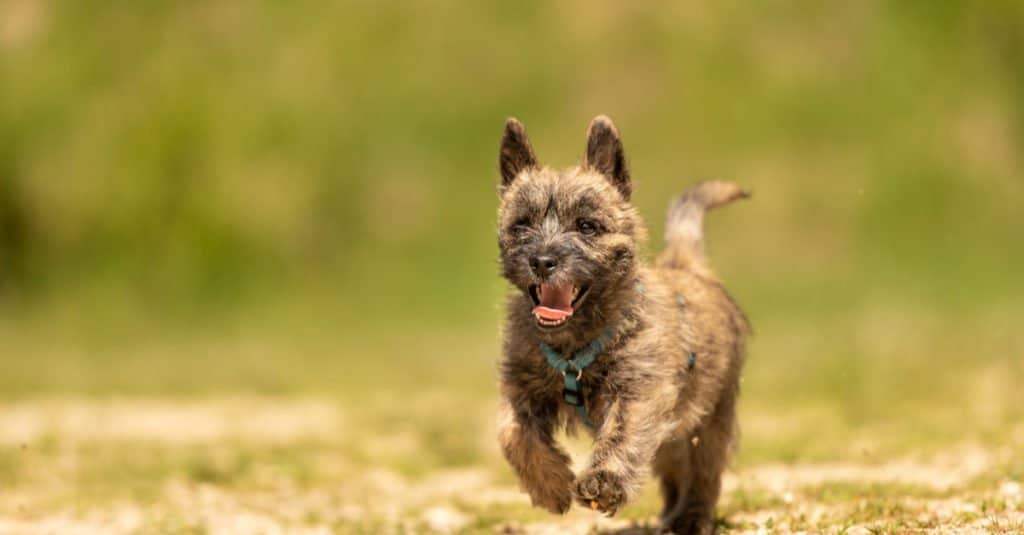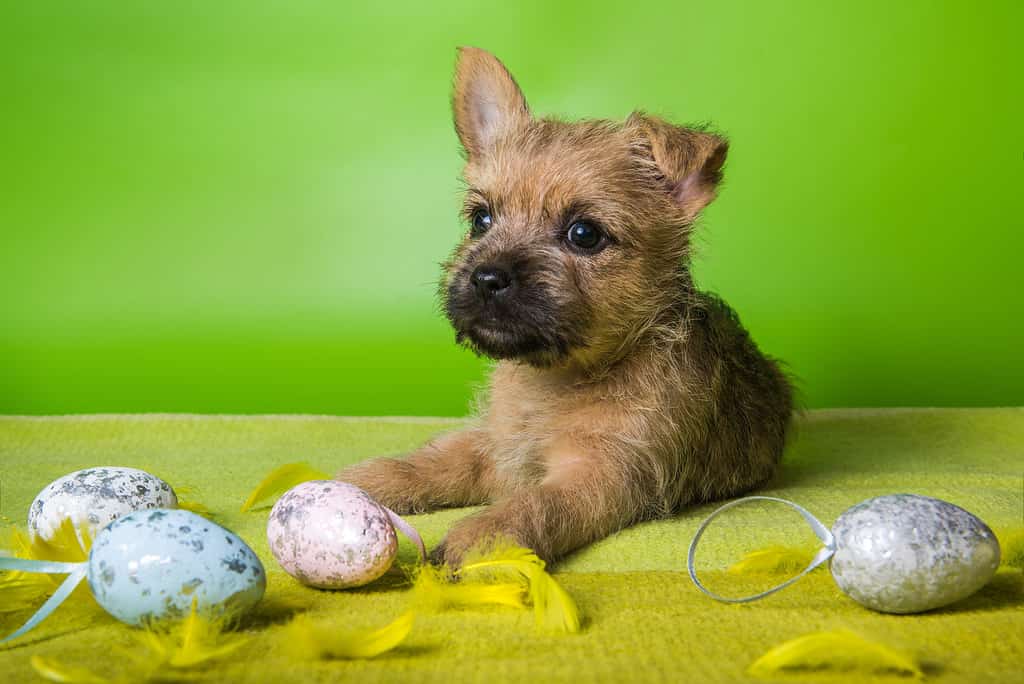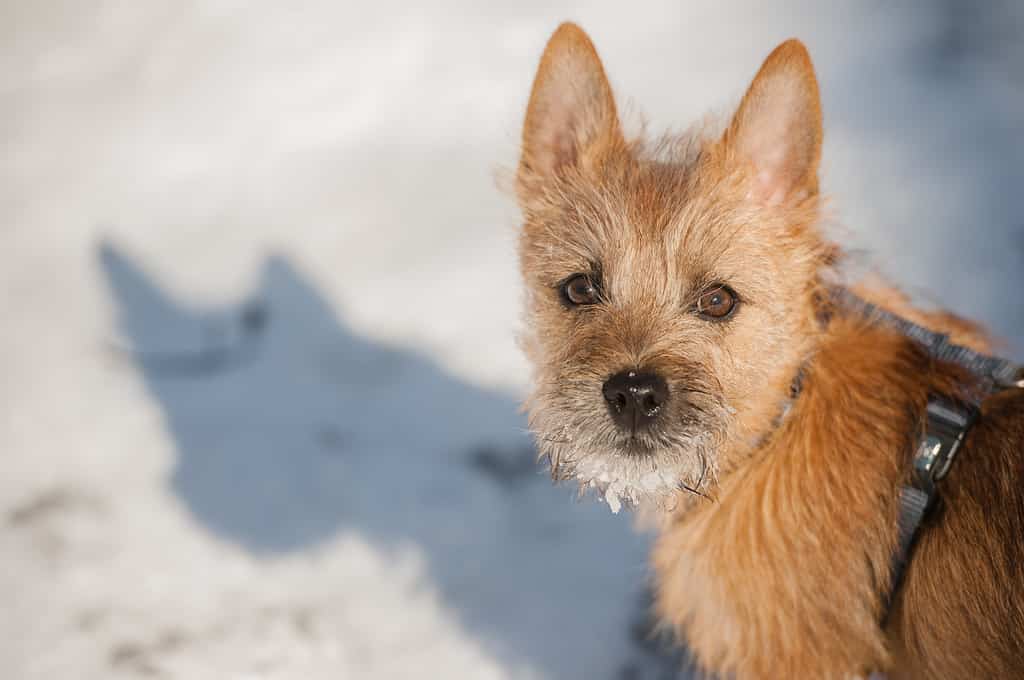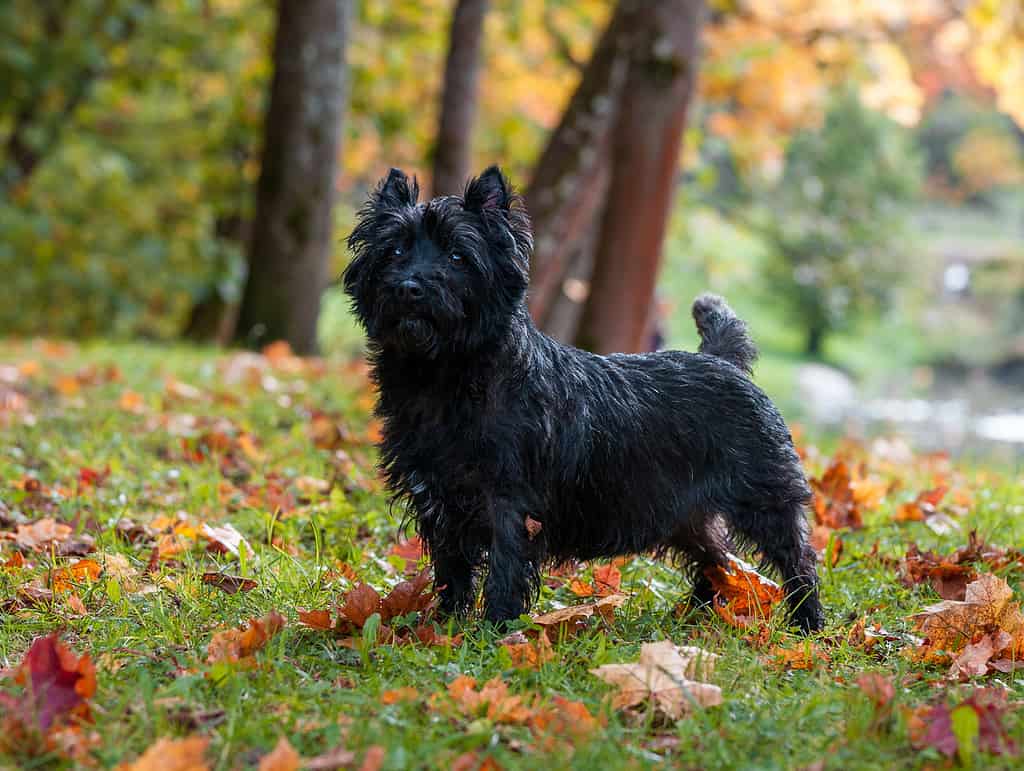As you would expect, cairn terriers belong to the terrier group of the American Kennel Club and are both independent and loyal. They think they are a lot larger than they really are and are known for their bravery. Whilst they only ranks around 70 out of 201 for popularity, they have a loyal following and make lovely pets. If you have just welcomed a cairn terrier pup into your home, here is a cairn terrier growth chart to let you know how your little friend is progressing.
Breed Summary
The cairn terrier is named after the rock piles (cairns) in Scotland where these little dogs used to patrol for rats. They are happy and busy little dogs with a shaggy coat. These guys are small enough to be a lap dog but are robust enough to accompany you on long walks in the country. Their color can be anything from cream through to black with brindle variations.
Cairn Terrier Growth and Weight Chart by Age
Cairn terrier pups are tiny but they grow fast! New owners are often concerned whether their pup is developing as they should. Below is a rough guide to the correct weights for cairn terrier pups at different ages. However, this is just a guide and you should always consult your vet for advice on whether your pup is gaining appropriate weight.
| Age | Male Weight | Female Weight |
| Birth | 2-7 ounces | 2-7 ounces |
| 1 Month | 1-2 lbs | 1-2 lbs |
| 6 Weeks | 1.5-3 lbs | 1.5-3 lbs |
| 2 Months | 2-4 lbs | 2-4 lbs |
| 3 Months | 6-8 lbs | 6-7.5lbs |
| 4 Months | 8-10 lbs | 8-9.5lbs |
| 5 Months | 9.5-12.5 lbs | 9.5-12 lbs |
| 6 Months | 10.5-14.5 lbs | 10.5-14 lbs |
| 7 Months | 11.5-15.5 lbs | 11.5-15 lbs |
| 8 Months | 12-16.5 lbs | 12-16 lbs |
| 9 Months | 12.5-17 lbs | 12.5-16.5 lbs |
| 10 Months | 13-17 lbs | 12.5-16.5 lbs |
| 11 Months | 13.5-17.5 lbs | 13-17.5 lbs |
| 12 Months | 14-17.5 lbs | 13-17.5 lbs |
| 2 Years | 14-17.5 lbs | 13-17.5 lbs |
When Will My Cairn Terrier Stop Growing?
Cairn terriers are fully grown at 12 months of age and this is typical for a small breed. They have a life expectancy of between 13 and 15 years.
How Big Will My Cairn Terrier Be When It’s Fully Grown?

Cairn Terrier puppies have a great deal of energy and love to play!
©thka/Shutterstock.com
Dogs are individuals and achieve different heights and weights. A large part of this is decided by their genes – if their mother and father are large then you are more likely to end up with a larger dog. However, other factors also play a role including diet and whether you have them spayed/neutered. The breed is registered with the American Kennel Club. The breed standard requires males to be 14 pounds in weight and females to be 13 pounds. Also, males should be 10 inches in height to the withers but females should be 9.5 inches.
that males are between 16.5 and 19.5 inches at the withers and females are between 15.5 and 18.5. Males should weigh between 28 and 35 pounds and females should weigh between 24 and 31 pounds.
When Should My Cairn Terrier Be Spayed or Neutered?
Because cairn terriers are small dogs, they avoid some of the problems associated with early neutering that larger breeds may experience. That said, the best age to have the procedure done depends on their breed, size, and gender. Discuss the options with your vet. As a rough guide, many small dogs are spayed/neutered at around six to nine months.
When Should My Cairn Terrier Be House Broken?
The advice from experienced Cairn terrier owners is that this breed can be stubborn with big personalities so housebreaking can be a challenge. The best approach is to learn to interpret your pup’s body language. When they look like they are going to pee or poop, take them outside and praise them. Never raise your voice when they have an accident, this will only make things worse.
When Should My Cairn Terrier Stop Eating Puppy Food?
Cairn terriers are classed as a small breed and according to the American Kennel Club, they can transition to adult food at between eight and 12 months. More energetic dogs may benefit from remaining on puppy food a little longer. You should take between seven and 10 days to transition onto a new food. Do it gradually to avoid stomach upsets. Pups usually have three meals a day but adult dogs need only one or two.
When Will My Cairn Terrier Start Losing Teeth?
Cairn pups usually start to lose their teeth at around four months of age. They should have a complete set of adult teeth by around six months but the canine teeth may take a little longer to fully emerge. This breed is prone to dental problems so it is important that you get your pup used to having their teeth brushed regularly.
When Should I Start Training My Cairn Terrier?
You can start training your Cairn pup as soon as you bring them home at around 10 weeks. You will need plenty of treats and break up training into very short sessions. Training should start inside the home where there are very few distractions.
What Cues Should I Teach My Cairn Terrier First?
This breed is an independent working dog and that can result in challenges when training. Cairn pups can be quiet but do not be fooled! They are highly observant and will notice tiny changes and movements – they are vermin hunters after all. This also means that they will give chase so a rock-solid recall command is vital to keep them safe. You can start working on this as soon as you bring your pup home. They also need to be taught to ‘heel’ so that they will walk politely on the leash by your side.
When Will My Cairn Terrier Calm Down?
Cairn Terriers do not have a reputation as a calm dog! If you check out the online Cairn terrier forums they are full of owners asking when they can expect their energetic ‘crazy’ pup to calm down. Every dog is different but many experienced owners say that there is often a change in their energy levels after their second year.
Common Health Issues Your Cairn Terrier Might Experience
Cairn terriers are hardy and healthy dogs. However, as is the case with all pure breeds, there are some genetic diseases that you need to be aware of in addition to the usual infections and issues (such as dental disease) that all dogs can get. These include:
- Globoid Cell Leukodystrophy (GCL)
- Liver Portosystemic Vascular Anomaly (PSVA) and Microvascular Dysplasia (MVD)
- Missing or deformed kidneys
- Ocular Melanosis (OM)
- Craniomandibular Osteopathy
Pictures of Cairn Terriers as Puppies

Cairn terrier pups are tiny!
©infinityyy/iStock via Getty Images
Pictures of Cairn Terriers at 6 Months

Full of energy – cairn terrier pup.
©studio-laska/iStock via Getty Images
Pictures of Fully Grown Cairn Terriers

The coat of the cairn terrier can be a range of colors.
©Mindaugas Dulinskas/iStock via Getty Images
The photo featured at the top of this post is © Sven Mewis/iStock via Getty Images
Ready to discover the top 10 cutest dog breeds in the entire world?
How about the fastest dogs, the largest dogs and those that are -- quite frankly -- just the kindest dogs on the planet? Each day, AZ Animals sends out lists just like this to our thousands of email subscribers. And the best part? It's FREE. Join today by entering your email below.
Thank you for reading! Have some feedback for us? Contact the AZ Animals editorial team.






